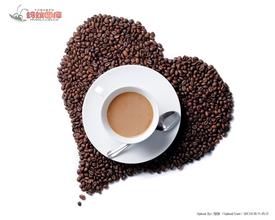Introduction to the Manor of Ethiopia Baking degree city Jasmine Tea Flavor and taste
Introduction to the Manor of Ethiopia Baking degree city Jasmine Tea Flavor and taste
Gima, which accounts for about 50 per cent of Ethiopia's annual output, grows between 4400 and 6000 feet above sea level in the country's southwestern highlands (the border between Kaffa and Illubabor provinces) and is usually exported to G5/G4.
However, in recent years, about 10% or 20% of Gima has been used to make up for the lack of taste of coffee, but its quality has gradually declined to its own level, but there are bipolar comments on coffee buyers (my friend only uses Gima as the base of espresso in his store, and its strong flavor surprises me). The coffee is like a hara, which follows the ancient method of sunbathing. It is also a little sour but slightly inferior to Hara, with medium texture and rugged earthy taste. Hara is located in the Eastern Highlands of Ethiopia (Harerge Province) and grows between 5000 and 7000 feet above sea level. A century ago, it was still wild on the slopes. Most of the raw beans are medium size and long at both ends, with yellow or golden green color, strong chocolate smell when baking, wild taste with moderate acidity and rich texture. It is a very typical mocha flavor. Good Hara has jasmine scent. And similar to the aftertaste of fermented wine, to some extent, the Mattari close to the BaniMatar area of Yemen is better.
Today, Hara still treats raw beans in the traditional sun, which is usually exported to the neighboring town of DireDawa, with an annual output of about 185000bags/60Kg, of which long beans (Longberry, evolved from the early Elaraby tree species,) and most of the specifications are G5 (Grade5) or G4. Unfortunately, good haras are often smuggled to Yemen and sold at higher prices for mocha beans.
Growing in the western highlands of southern Ethiopia (the border between Shewa and Sidmo), east of Jima, north of Sidamo, most Europeans and Americans prefer 3600-6200 feet above sea level, most of them are washed with water, their annual output is about 110000bags/60kg, most of them are round (15/16scr), the color is green and bluish, the export is mostly G2, the taste is similar to Yegashev, but the viscosity is thin, but the fragrance of flowers and fruit are obvious. The sour taste is also softer than Yegashev, the more irritating acidity, the aftertaste is similar to the wine, and has a good and balanced quality. it is a noteworthy Ethiopian boutique coffee after Yegashev, but almost all limes are vertically integrated and exported by Ethiopian coffee organizations, so it is almost rare to see them in China.
It is heard that this kind of baking is more suitable for air flow medium baking, not suitable for deep baking, and the better flavor after baking is two to three days. In fact, good Lim is on a par with Yegashev (this is actually a subjective consciousness of different opinions).

Important Notice :
前街咖啡 FrontStreet Coffee has moved to new addredd:
FrontStreet Coffee Address: 315,Donghua East Road,GuangZhou
Tel:020 38364473
- Prev

Introduction to the Grinding Calibration method of Brand Flavor description of single Coffee Bean Price in Brazil
Introduction to Yemeni: Mocha Sanani, Mattari India: Malabar, Karnataka, Tellichery Vietnam: Weasel Coffee coffee Indonesia: Java, Mandh
- Next

Introduction to the regional treatment method of sunburn Sidama coffee flavor and taste manor
Sun Sidamo Coffee Flavor Flavor Manor area treatment method about Ethiopian sun exposure (high-shelf sun exposure): in the past, the Ethiopian sun exposure method was to spread wild coffee fruits directly on the mud ground for exposure. This drying method has two disadvantages: 1. After picking, the beans are not specially screened and treated, and the uneven appearance and maturity are mixed.
Related
- Detailed explanation of Jadeite planting Land in Panamanian Jadeite Manor introduction to the grading system of Jadeite competitive bidding, Red bid, Green bid and Rose Summer
- Story of Coffee planting in Brenka region of Costa Rica Stonehenge Manor anaerobic heavy honey treatment of flavor mouth
- What's on the barrel of Blue Mountain Coffee beans?
- Can American coffee also pull flowers? How to use hot American style to pull out a good-looking pattern?
- Can you make a cold extract with coffee beans? What is the right proportion for cold-extracted coffee formula?
- Indonesian PWN Gold Mandrine Coffee Origin Features Flavor How to Chong? Mandolin coffee is American.
- A brief introduction to the flavor characteristics of Brazilian yellow bourbon coffee beans
- What is the effect of different water quality on the flavor of cold-extracted coffee? What kind of water is best for brewing coffee?
- Why do you think of Rose Summer whenever you mention Panamanian coffee?
- Introduction to the characteristics of authentic blue mountain coffee bean producing areas? What is the CIB Coffee Authority in Jamaica?

